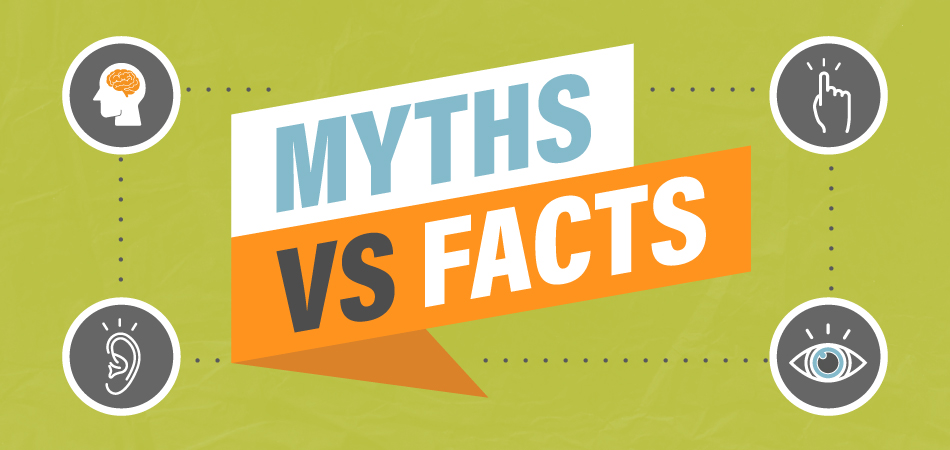Don’t let website accessibility myths prevent you from making sure your site is inclusive and built for all users.

Website accessibility ensures everyone, regardless of ability, has equal access to information and site functionality. When a website is correctly designed and developed with this in mind, all users can access and interact with a site. However, there are some common misconceptions that may prevent you from investing in your website’s accessibility. So, we’ve addressed these myths and provided all the information you need to make sure your website is inclusive and built for all users.
Myth: Accessibility places too many restrictions on design and ruins the look and feel of a website.
Busted: Beautiful sites can be accessible as long as they follow these four basic principles. You can still use beautiful colors as long as they present with enough contrast for everyone to see. You can still use imagery as long as it is accompanied by appropriate alt text to be picked up by screen readers. The list goes on.
Myth: There’s only a small audience for accessibility.
Busted: There are more than 1 billion people worldwide that have some sort of disability. The world's population is more than 7.7 billion people and growing. When you do the math, that is nearly 1 out of every 7 people – or 15% of the world’s population that has some sort of disability.
Myth: Accessible websites are costly.
Busted: Designing and developing with accessibility at the start of a project will cost you less in the long run. When you ignore accessibility, a small issue can grow over time during design and development that could enable major design changes or code rewrites requiring a lot of extra time and money.
Making your site accessible to the millions with disabilities can give you a wildly larger pool of people to feel welcomed and included – becoming advocates for your brand. Additionally, things that make a site more accessible like alt text, captions and proper site structure can check boxes for SEO. This can also drive more traffic to your site.
Myth: It can’t be done during a tight time frame.
Busted: It adds very little time to select properly contrasted colors or to write properly structured HTML. And as we learned earlier, it takes significantly less time to do things the right way at the start of a project.
Myth: Accessibility is hard to accomplish.
Busted: There is definitely a lot involved and many factors to consider, but if you follow an inclusive process the road to accessibility is very clear. Just like it can save you money and time, it can make managing your website easier. And there are many things you can do yourself to get started.
Myth: Once you have launched an accessible website, you are good to go.
Busted: Accessibility is not something you check off the list. It is rare that a website is posted and never updated. Every update, from new content to a new page to a new component, should be reviewed for accessibility.
Myth: Using automated accessibility checkers is enough.
Busted: While they are getting better and better, automated accessibility checkers are not capable of catching all errors. They are just the place to start. Automated tools lack the ability to put things into context, they do not take real life into consideration. For more on this, check out Smashing Magazine’s article on the importance of manual testing.
What accessibility challenges is your website facing? We are happy to talk with you about best practices and the steps you might need to take for an inclusive website. Let's talk!